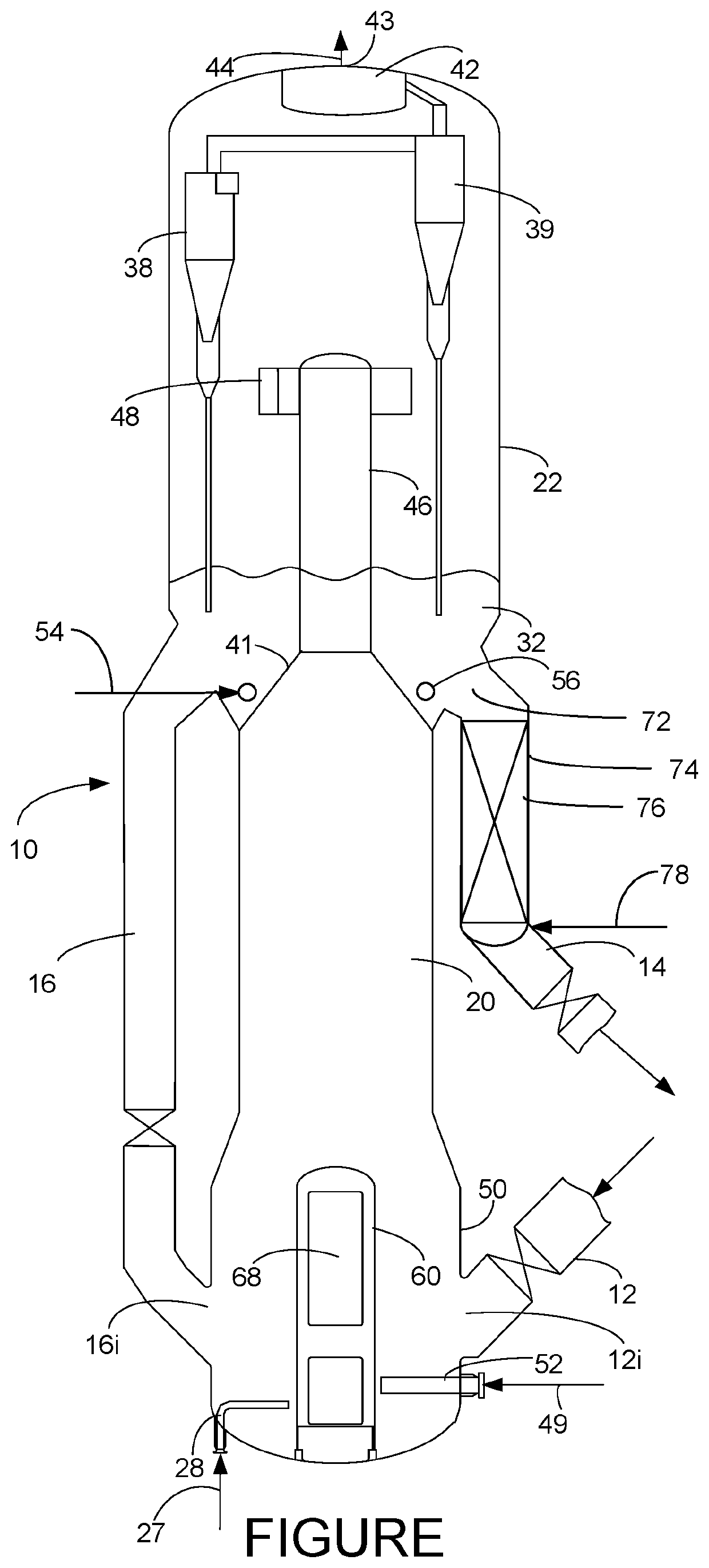Process for regenerating a dehydrogenation catalyst
a technology of dehydrogenation catalyst and process, which is applied in the direction of catalyst regeneration/reactivation, physical/chemical process catalyst, metal/metal-oxide/metal-hydroxide catalyst, etc., can solve the problems of catalyst deactivation, olefin production can suffer, coke produced in the pdh reaction can provide insufficient heat from combustion, etc., and achieve the effect of restoring catalyst activity
- Summary
- Abstract
- Description
- Claims
- Application Information
AI Technical Summary
Benefits of technology
Problems solved by technology
Method used
Image
Examples
example 1
[0046]Catalyst was prepared by incipient wetness impregnation of an aqueous solution of gallium nitrate, potassium nitrate, and tetraamine platinum nitrate on a micro-spheroidal spray dried alumina containing 1% SiO2. The catalyst support had BET surface area of 134 m2 / g measured by nitrogen adsorption. Impregnation was followed by calcination in air for 4 hours at 750 C. Catalyst contained 0.0076% Pt, 1.56% Ga, 0.26% K, 0.5% Si (by weight) as measured by inductively charged plasma atomic emission spectroscopy (ICP-AES). Catalyst appearance was white. Carbon and nitrogen content were measured by CHN method D5291. Carbon content of the fresh catalyst was 0.07 wt %, close to the detection limit of 0.05 wt % (likely due to adsorbed carbonates). Nitrogen was not detectable (detection limit 0.05 wt %). Bulk density of the catalyst was 0.83 cm3 / g.
[0047]Long-term aging of catalyst was simulated by cycling the catalyst between reactor and regenerator conditions as follows:
Startup: Two cm3 o...
example 2
[0048]150 mg of cycle-aged catalyst from Example 1 was loaded between quartz wool plugs in a quartz tube reactor with inner diameter 3.85 mm. Inert alpha alumina spheres were loaded below the catalyst bed to minimize thermal cracking. The reactor effluent composition was analyzed by transmission infrared spectroscopy which identified propane, propene, ethane, ethene, and methane products with data collection approximately every 7 sec. The effluent of the infrared analyzer was directed to a gas chromatograph which was used to occasionally analyze the product stream and check the accuracy of the infrared analyzer on the real product stream.
[0049]Catalyst was dried in nitrogen and held for 30 minutes at 120° C., then heated to 720° C. in nitrogen. The catalyst was then exposed to a mixture of dry gas consisting of 2.5% O2, with the balance nitrogen where the dry gas flow (O2+nitrogen) was 15 standard cm3 / min, mixed with 25 mol % steam generated by vaporizing water which was fed from a ...
example 3
[0051]Same as Example 2 except pretreatment and regeneration dry gas composition was 5% O2, with the balance nitrogen instead of 2.5% O2, with the balance nitrogen. The propane conversion at or near 0.65 min on stream is shown in Table 1.
PUM
| Property | Measurement | Unit |
|---|---|---|
| Temperature | aaaaa | aaaaa |
| Fraction | aaaaa | aaaaa |
| Concentration | aaaaa | aaaaa |
Abstract
Description
Claims
Application Information
 Login to View More
Login to View More - R&D
- Intellectual Property
- Life Sciences
- Materials
- Tech Scout
- Unparalleled Data Quality
- Higher Quality Content
- 60% Fewer Hallucinations
Browse by: Latest US Patents, China's latest patents, Technical Efficacy Thesaurus, Application Domain, Technology Topic, Popular Technical Reports.
© 2025 PatSnap. All rights reserved.Legal|Privacy policy|Modern Slavery Act Transparency Statement|Sitemap|About US| Contact US: help@patsnap.com

